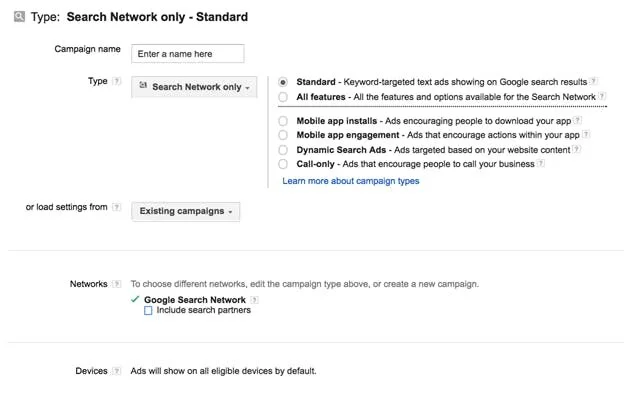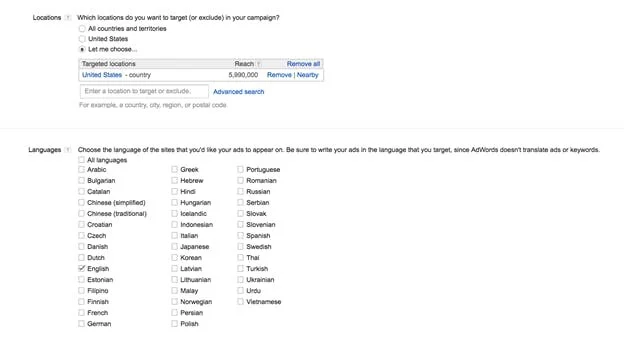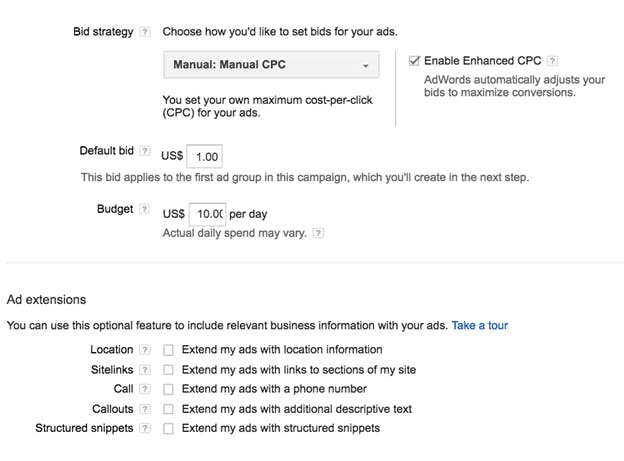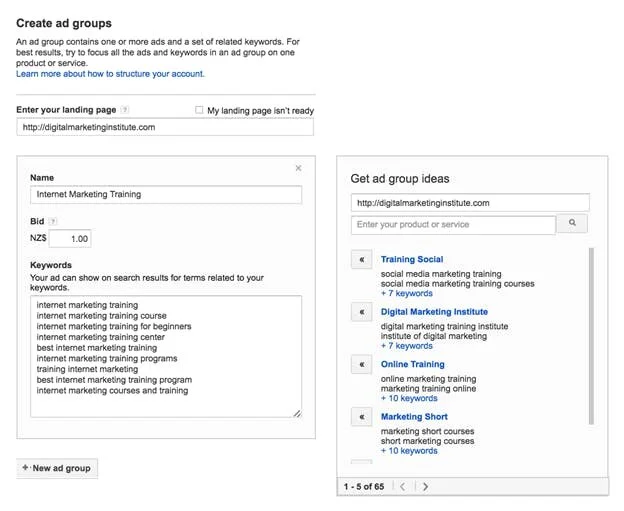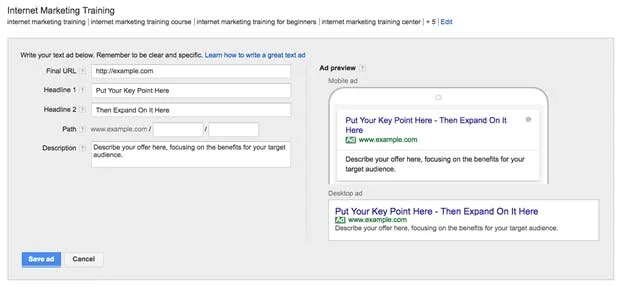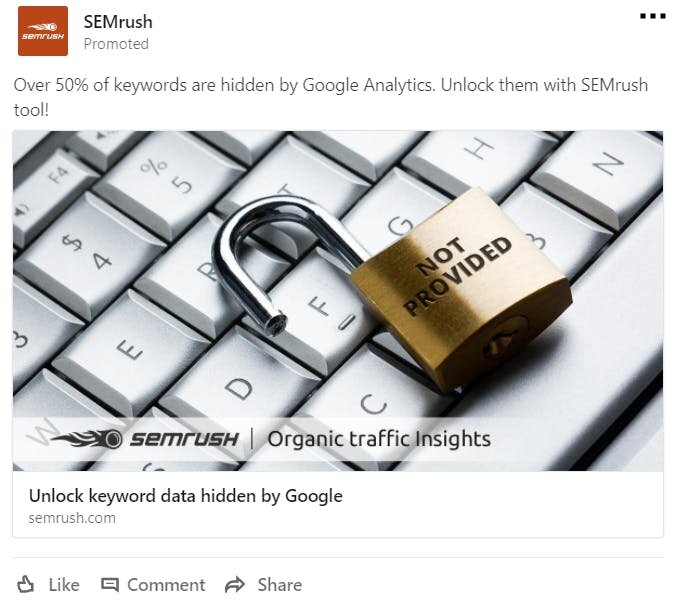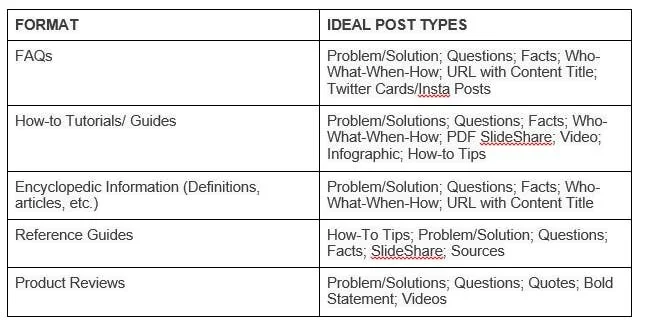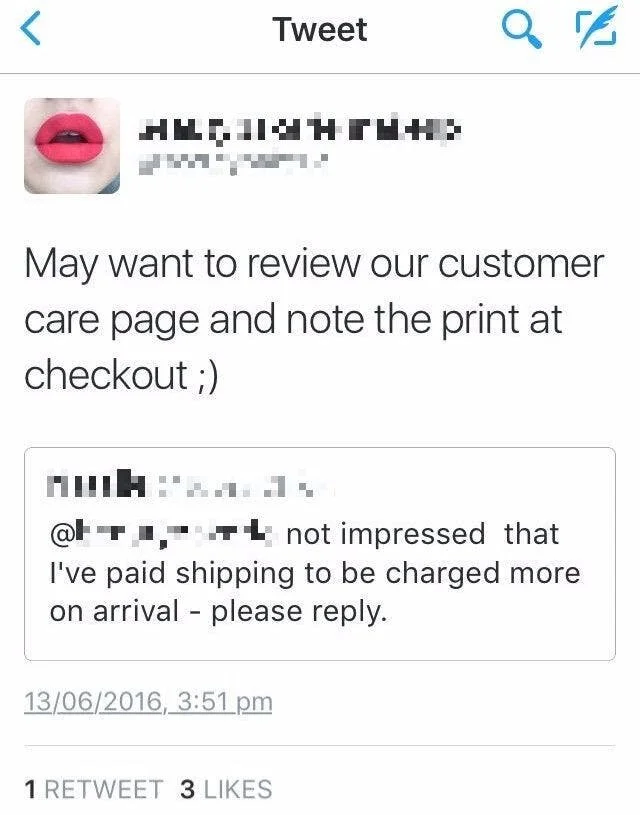It’s the most well known online marketing platform in the world, and it could be the best source of growth for your startup. Google AdWords has been around since October 2000, and while it might not be the newest ad platform on the block, it’s undoubtedly one of the best.
AdWords is Google’s paid advertising platform - a version of organic search for businesses with fewer backlinks and larger digital advertising budgets. With AdWords, you can generate search traffic without spending months (or years) gradually moving up the rankings via SEO.
For marketers, AdWords has several benefits:
You can start generating traffic right away, instead of investing time into an SEO or social media marketing campaign.
It’s easy to track your conversion rate and results, letting you optimise your campaign and improve your return on investment.
Once you find profitable keywords and ad combinations, you can scale your budget in just a few seconds, taking your campaign from a side project into your biggest source of new customers.
Many marketers, especially those that are part of small startups, avoid AdWords over fears of it being too expensive or challenging. This is understandable - after all, this is traffic you need to pay for, not the free traffic of organic search.
Despite its reputation as an expensive advertising channel, AdWords is surprisingly affordable once you have your campaign optimised and dialed in. A few weeks of losing money can often lead to a hugely profitable campaign that drives results for several years.
Would you like to add Google AdWords to your startup or enterprise business’s digital marketing arsenal? Read on to learn the basics of AdWords, from choosing keywords to creating your first text ads.
Creating your campaign
Before you can start creating ads and choosing how much you’ll pay every time a user clicks on that ad, you need to set up your campaign.
Google AdWords is split into two networks:
The Search Network, which is made up of text ads displayed alongside Google’s search results. You’ll see search network ads when you search using Google for things like “car insurance” or “electric bicycles.”
The Display Network, which is made up of image, video and interactive ads displayed on publisher websites. These are the ads you see beside YouTube videos and inside the AdSense units on news websites and blogs.
Both of these networks are driven by keywords. In this guide, we’ll focus on the search network, since it’s the easier of the two networks to start with as an AdWords beginner.
To create your campaign, click on the “+ Campaign” button in the AdWords interface, then select “Search Network only” to limit your campaign to Google search:
On the next page, you’ll need to give your campaign a name and select the ad type you’d like to display. For most campaigns, standard keyword-targeted ads will deliver the best results.
Before you move on to the next step, make sure to deselect “Include search partners.” This will prevent your ads from displaying on other search engines and limit their reach only to Google’s search network.
You can also select the type of devices you’d like to include in your campaign. If you only want to display on mobile devices, for example, you can select device types to limit your reach to the hardware you’d like to target.
After you’ve completed this section, scroll down the page. The next step is to select your target location. Google allows you to select entire countries, regions, or specific towns and cities. The more targeted you get, the smaller your campaign’s audience will become.
Once you’ve selected your campaign’s location, choose your target languages. It’s best to limit each campaign to one language, as this will prevent your ads from showing to people that can’t understand them (for example, English ads in a Spanish-speaking region).
For our example campaign, if you are in the United States, choose the US as the geographic targeting area and English as the campaign language:
From here, it’s time to set your bid. At this point, you have very little information about the cost of your target keywords, so it’s best to enter a relatively low bid that you can modify later once your campaign is completely set up.
For our example campaign, we’ve entered a default bid of $1.00 and set a $20 daily budget. We have also excluded features like location information and sitelinks:
Ad groups and keywords
AdWords splits campaigns into ad groups - groups of similar keywords that “theme” a specific ad. In our example below, we’ve created an ad group for keywords related to internet marketing training to promote our offer:
Google will recommend keywords for each ad group based on your landing page content. You can accept Google’s keywords, or add your own keywords based on what you think your target audience is searching for.
As a general rule, aim for about 5-10 keywords per ad group. If you add too many keywords to each ad group, you run the risk of reducing the relevance of your ads. If you have a large range of keywords to target, split them into separate ad groups to keep your campaign’s focus tight.
Keyword types and match types
From a commercial perspective, not all keywords are equally valuable. Some keywords, such as keywords with an obvious commercial intent, are much more likely to produce conversions than others.
In the screenshot above, you’ll notice a variety of different keyword types. There are:
Informational keywords, such as “internet marketing courses and training”
Comparison keywords, such as “best internet marketing training”
For the best results, you’ll want to split your ad groups based on keyword type. Group keywords with commercial intent together, while creating separate ad groups for keywords that have more of an informational focus.
This might not seem important now, but it will help you better control your bidding once you start to generate conversions from your campaign.
Keywords can also be divided into three match types:
Broad match keywords, which have the largest prospective audience
Phrase match keywords, which will display when users search for a specific phrase
Exact match keywords, which only display when users search for an exact phrase
Google explains keyword match types in more detail here. Understanding match types will help you get a stronger ROI from your campaign and avoid spending money on keywords that aren’t directly related to your offer.
Creating ads
Once you have selected your target keywords, set each keyword’s match type and grouped all of your keywords into ad groups, it’s time to start writing ads for your campaign.
To create your ad, you’ll need to enter text into several fields. We’ve explained each field and its effect on your ads below, with some advice on what to focus on in each field:
Final URL: This is the page that people will end up on after they click your ad. Enter the URL of your landing page. If you don’t have a landing page, enter the main URL of your website’s homepage.
Headline 1: This is your primary headline. Put the key point of your offer here, such as the name of your product or the type of offer you’re promoting. This is normally the first part of your ad that people will read.
Headline 2: This is your secondary headline. Expand on your offer here by listing a key benefit or unique selling point to differentiate your product or service from competitors.
Path: This is the display path to your URL. You can use this to make your landing page feel more specific by indicating that it’s directly related to the searcher’s keywords.
Description: This is where you can enter a description for your offer. Expand on the points you listed in your headlines and add a Call To Action (such as “Click here now to join!” to encourage users to respond to your ad.
After you enter your ad text, Google will display a preview of your ad for desktop computers and mobile devices:
Writing highly effective ads is an art form, and it’s one that any AdWords advertiser should learn to master. The better your ads connect with your target market, the less you’ll pay per click and the higher your campaign’s conversion rate will become.
If you’re struggling to write effective ads, check out Unbounce’s guide to writing high-performing AdWords ads, which contains a huge list of tips and techniques to make sure your ads say what they should and inspire your target audience to take action.
Bidding and optimisation
Congratulations - you’ve created your first campaign! From here, it’s time to do several things to make sure you can optimize your campaign and improve its performance over time:
Set up conversion tracking, so that you can track which ads produce conversions and which aren’t bringing in any new leads/customers.
Make sure your CPC bid is high enough to display your ads on the first page. You can adjust this bid later based on your campaign’s performance, but at the beginning of a campaign you may need to bid high to earn impressions and generate traffic.
Create several variations of each ad, each with a different message. To begin with, try running two to five ad variations for each ad group to learn which variation performs the best.
Before you start optimizing, make sure your data is statistically significant. This will help you make meaningful optimisations, instead of optimising based on data that might not say what you think it does.
Once you find winning keyword and ad combinations, increase your budget and scale your campaign to reach a larger audience. The great thing about AdWords is that you don’t need to wait for more traffic - all you need to do is adjust your budget.
Expand your campaign by adding more ad groups and keywords, each with their own specific landing page.
Using the process above, a small AdWords campaign can grow into a large, highly profitable source of leads and sales for your business. Start small with a budget that you can afford to spend on experiments, then scale once you discover winning ad and keyword combinations.
Does your business use AdWords?
Most AdWords campaigns aren’t immediately profitable. However, many campaigns go from money-losing experiments into highly profitable marketing assets over the course of weeks or months of optimisation.
If you have a service, a product, or any other type of offer with a clearly defined target audience that’s reachable online, AdWords could be a highly profitable marketing channel that fuels short and long-term growth.
Are you ready to start using Google AdWords? From ad groups and keyword targeting to writing engaging and effective ads, put the simple steps we’ve listed above to work and start generating leads, enquiries and sales from Google’s search advertising platform.
Want to expand your digital marketing efforts beyond Google Adwords? Get a globally recognised certificate! Our courses are taught by the industry experts so you will know how to deal with the local market better!
Source: Digital Marketing Institute



